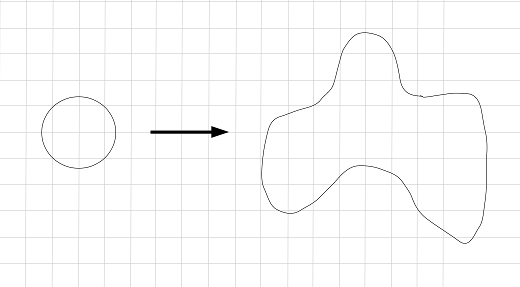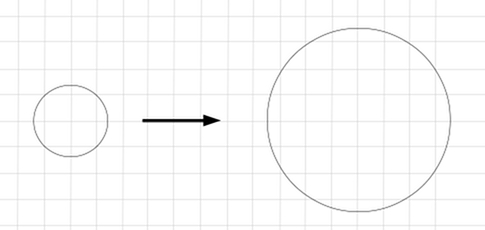
This practical is based around some ideas set out by D'Arcy Thomson in his book "On Growth and Form", published in St Andrews about a century ago. The topic is inhomogenous and/or anisotropic growth.
Homogenous growth, which is what happened in the imaginal disc practical, is growth at equal rates at all within a tissue. Isotropic growth is equal growth in all directions. A small disc subjected to homogenous and isotropic growth will become a big disc.

Inhomogenous or anisotropic growth violates these conditions and can drive a tissue to change shape as it grows. Inhomogenous growth might arise for a variety of reasons, from an underlgying gradient of growth factor to a spatially-varying availability of growth factors. Anisotropic growth can be driven by cells dividing preferentially along the direction of a morphogen gradient or some other source of polarity (you will learn more about such polarity systems if you choose to continue studying developmental biology in years 3 and 4).

The next few slides will present you with some questions about inhomogenous and anisotropic growth, to make sure you have the idea, before we go on to biological examples. When you are ready, click here.